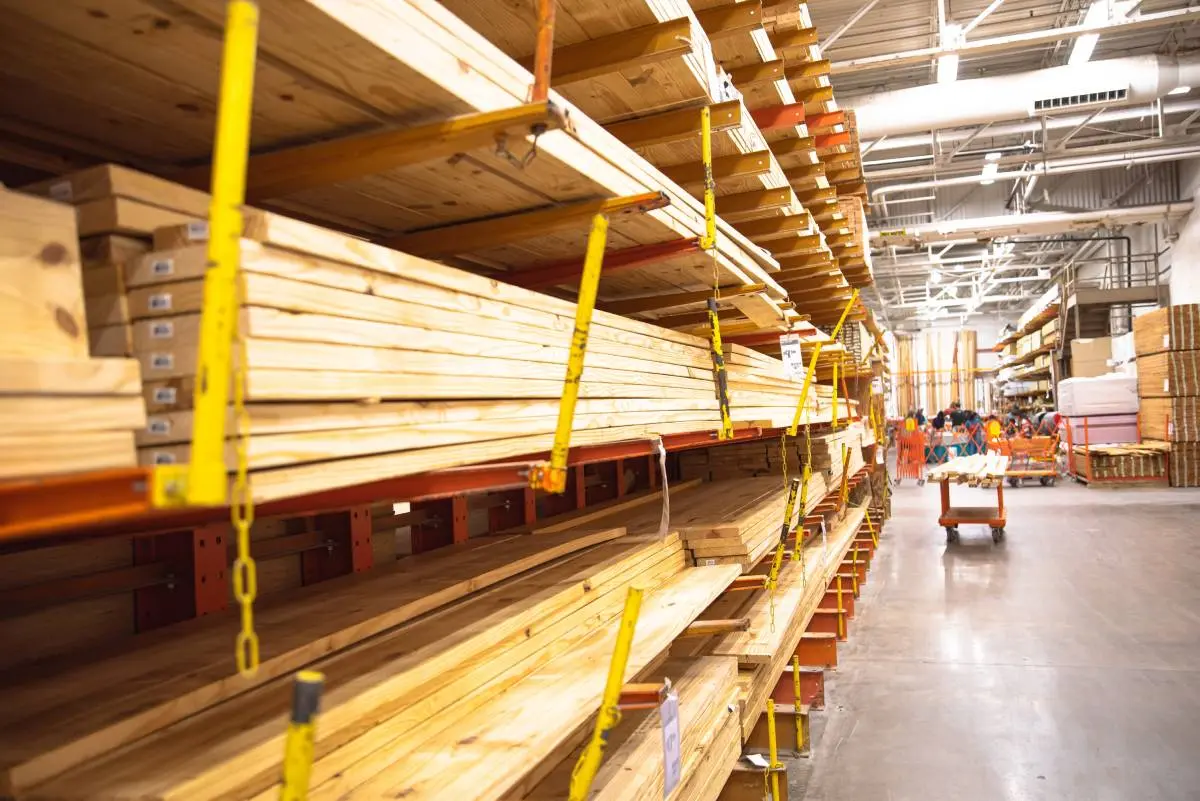When you run a contracting business, time and profit are everything. Materials must arrive on time, and prices must be reasonable to maintain your margins. Across the United States, most professionals rely on one of two giants to keep their projects moving: Lowe’s or Home Depot. Both retailers claim to prioritize contractors, but how do their programs actually compare in the Home Depot vs. Lowe’s debate?
Prices and Volume Discounts
For contractors working with larger orders, every discount matters, especially when comparing Lowe’s vs. Home Depot prices for bulk materials. Both companies offer quote systems that reduce costs on bulk material purchases.
Home Depot: Volume Pricing Program
Home Depot’s Volume Pricing Program is available to Pro Xtra members who submit qualifying material lists through the Pro Desk for custom quotes on large orders, typically starting at about $2,500, depending on location and items.

Many professionals combine this program with the Home Depot contractor discount to maximize savings on large material orders.
Lowe’s: Pro Quotes and Member Pricing
Lowe’s allows professional members to build quotes online or in-store through the Pro Desk, where the Lowe’s contractor discount often helps small general contractors stretch their margins further. Their volume pricing typically applies to qualifying quotes starting around $2,000 or more, while Home Depot’s minimum may vary by region or order type.
Loyalty, Rewards, and Programs
A well-designed loyalty program can save your business thousands of dollars each year. Whether through rebates, discounts, or perks, these programs reward consistency and help contractors track spending across multiple projects.
Home Depot: Pro Xtra
Home Depot’s Pro Xtra is designed specifically for professionals and remains a highlight in the ongoing Home Depot vs. Lowe’s loyalty rewards comparison. It includes purchase tracking, job-level reporting, and perks that grow with your annual spend.
The program’s Paint Rewards feature can reduce coating costs for contractors who rely heavily on paint and finishing products.
Lowe’s: MyLowe’s Pro Rewards
Lowe’s recently overhauled its professional loyalty program to MyLowe’s Pro Rewards, moving to a points-based system that turns spending into rewards. Points can be redeemed for “MyLowe’s Money,” which helps reduce future material costs.
The program is easy to use and offers additional benefits, including up to 20% off paint purchases once annual paint spend exceeds $3,000.
Delivery and Jobsite Logistics for Pro Contractors
Fast, reliable delivery can help keep your project on schedule and prevent costly downtime, another key consideration in the Lowe’s vs. Home Depot service comparison. The better the system, the smoother your workflow.
Lowe’s: Jobsite Delivery and Speed
Lowe’s has invested heavily in logistics, now offering same-day or next-day delivery for in-stock items in many areas. Pro customers can also schedule jobsite truck deliveries, which is ideal when you need to stage materials early or replace missing items during the project.
Home Depot: Pro Coordination and Rental Delivery
Home Depot manages jobsite deliveries through its Pro Desk, where teams help schedule drop-offs and coordinate rentals through its nationwide rental program. The company also supports delivery for large equipment rentals, which is useful for heavy construction or landscape projects.
Business Tools and Tax Support for Contractors
Strong backend tools enable contractors to control costs, manage taxes, and streamline their accounting. Both stores offer solutions that support growing teams and busy workflows.
Tax-Exempt Purchasing and Receipt Tracking
Home Depot and Lowe’s both allow tax-exempt purchasing for eligible businesses and provide digital receipts tied to your Pro account. This makes it easier to track spending by job, category, or employee.
Pro Xtra even allows integration with some accounting systems, while Lowe’s offers digital uploads through its Pro dashboard.
Credit and Financing for Cash Flow
Each retailer offers business credit options tied to its loyalty program, including Lowe’s vs. Home Depot credit card choices that offer unique perks for professionals.

Choosing the card that best aligns with your billing cycle can smooth out cash flow between project draws. This is separate from contractor financing, which provides homeowners with payment options for their projects.
Expert Opinions on Lowe’s vs. Home Depot
We reached out to leaders in the home improvement space and asked how Lowe’s and Home Depot stack up for contractors. Here are some of their thoughts.
Perceived Quality
Rassan Grant, founder of Norstone, sees the two retailers as very close in terms of quality.
“It’s largely a toss-up,” said Norstone. “Both can be decent options. But if I had to choose one, I would probably go with Home Depot. Home Depot actually works with fewer vendors than Lowe’s, but they are more selective so they have better vendors across the board. That makes their products and materials typically higher quality.”
Finishes vs. Frame Materials
Josh Qian, COO and co-founder of LINQ Kitchen, also pointed out that both retailers have distinct strengths.
“Home Depot feels a bit more focused on high-volume construction due to the extensive selection and variety of lumber and basic construction materials,” said Qian. “Lowe’s, on the other hand, seems a bit more polished, with slightly more finish selections and upscale fixtures, which is a reflection of the work I do in luxury design.”
He added that Lowe’s offers a wider range of specialty hardware, wood species, and design-forward fixtures that suit luxury cabinetry and finish work. At the same time, Home Depot remains the stronger option for bulk construction materials.
Limits on Discounts for Specialty Items
Not every high-end or specialty product qualifies for contractor discounts.
As Qian said, “Sometimes a discount does not apply to specialized projects or higher-end products, which can be a drawback. Prices on commonly used building materials are very comparable, and many times they are aligned. Price is not the sole decision-making factor; availability, consistency, and quality are.”
Product Availability and In-Store Consistency
Carr Lanphier, CEO of Improovy, explained the importance of reliability.
“I’ve had good luck with both Lowe’s and Home Depot for different projects, but in general, I would say I go with Home Depot more because I find them more consistent in terms of expertise, as well as simply what they have in stock,” said Lanphier. “I have had experiences going to Lowe’s only to find them out of something I need in a good quantity for a project, or just not having enough of what I need. In my personal experience, this is not a problem at Home Depot.”
Home Depot vs. Lowe’s: Which Store Fits Your Contracting Business?
Every contracting business operates differently. The best supplier often depends on your order volume, job type, and delivery needs.
Kitchen and Bath Remodeler With Frequent Mid-Sized Orders
Remodelers often place material orders around $3,000 that mix fixtures, cabinetry, and finishes. Lowe’s may be more convenient in these cases due to its generally lower minimum quote threshold of around $2,000 and a strong selection of design materials.
Painting Contractor With Steady Coating Spend
If paint is your bread and butter, Home Depot’s Paint Rewards program and easy reorder system can save time and reduce costs across multiple projects.
Hardscape or Exterior Crew With Heavy Loads and Rentals
For crews handling masonry, pavers, or large outdoor builds, both retailers perform well. Compare quotes for materials, remodeling tools, and rental equipment, and factor in delivery coordination.
Institutional, School, or Nonprofit Work
Tax-exempt status and transparent purchase reporting are the primary considerations here. Both companies offer online portals that simplify documentation and expense tracking.
Conclusion
There isn’t a single best choice for every contractor. Home Depot appeals to those who prioritize consistency, professional-grade service, and a comprehensive stock of core construction materials. Lowe’s is ideal for remodelers and designers who want flexible ordering, a wide range of finish selections, and fast delivery on smaller to mid-sized orders.
In reality, the smartest contractors work with both. They compare quotes, measure service and quality, and let real-world performance decide where to buy. That approach keeps your options open, your projects on track, and your profits protected in 2025.


